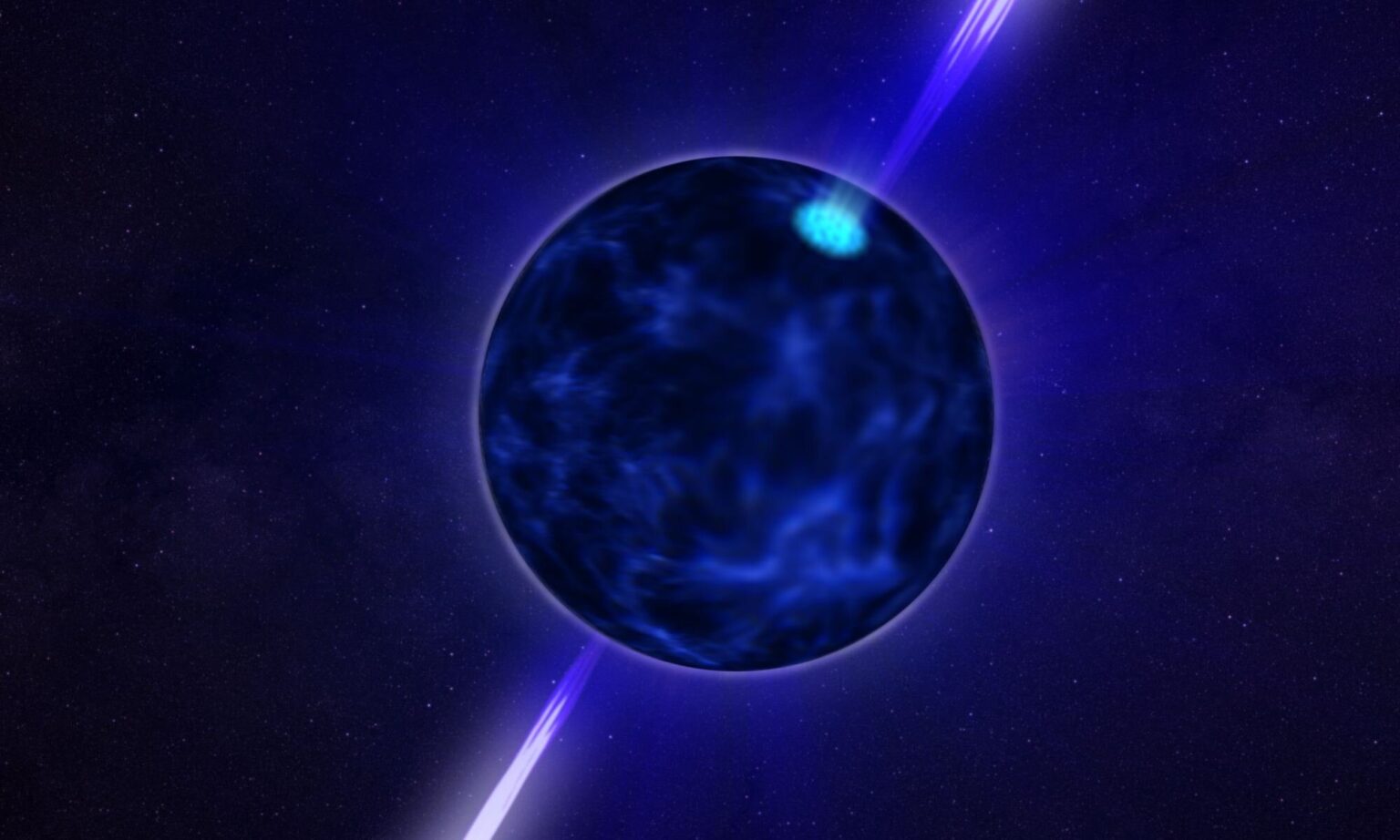Scientists hope that in the near future, the Event Horizon Telescope will search for millisecond pulsars that are located near the supermassive black hole at the center of our Galaxy. They are expected to help test Einstein’s general theory of relativity.

Amazing millisecond pulsars
A group of astrophysicists recently published an article outlining the prospects for studying millisecond pulsars using the Event Horizon Telescope. These amazing objects are neutron stars that rotate so fast that dozens of pulses emanate from their poles every second.
At the same time, the period is maintained so clearly that any changes that occur with a neutron star can be tracked by the change in momentum. Since pulsars are the remnants of massive stars, astronomers expect that there should be about a billion of them in the Milky Way alone. But so far, only 2000 have been discovered.
The reason for this is that some of these neutron stars are located at the other end of our star system, and some are covered by clouds of dust and gas. Researchers are particularly interested in those millisecond pulsars that orbit the supermassive black hole Sagittarius A*, located in the center of the Milky Way.
Testing the theory of relativity
Millisecond pulsars near a supermassive black hole give scientists a unique opportunity to test Einstein’s theory of relativity. Its validity as a whole has been confirmed experimentally for a long time and repeatedly. However, scientists have alternative theories about how strong gravity affects the behavior of objects.
The difference between their predictions of the behavior of an object near a black hole and similar predictions of classical relativity is significant, although small. And it will not be possible to establish which of the assumptions is correct simply by observing the stars that orbit Sagittarius A *. For this, the accuracy of terrestrial telescopes is still too low.
But millisecond pulsars, with their ultra-precise pulses, may well become the tool that will allow measuring all deviations of the orbit from the classical Newtonian one. However, to do this, they must first be found.
Event Horizon Telescope
Scientists already have a tool that can help them in their search. We are talking about the Event Horizon Telescope, a virtual observatory that “stacks” signals from several super-powerful receivers scattered all over the Earth. It was with its help that a few years ago, for the first time, an image of a supermassive black hole was obtained, first in another galaxy and then in ours.
These images are based on data that has been collected for many years. And they contain a lot of information not only about the black hole, but also about the objects that surround it. However, so far, the Event Horizon Telescope has not been able to find a single millisecond pulsar there.
This did not come as a surprise to scientists. After all, the center of the Milky Way is also surrounded by strong clouds of dust and gas, which delay all radiation. Therefore, even for the Event Horizon Telescope, the probability of seeing a millisecond pulsar is only 2 percent. However, the researchers still insist that it should continue observations.
According to phys.org
Follow us on Twitter to get the most interesting space news in time
https://twitter.com/ust_magazine

